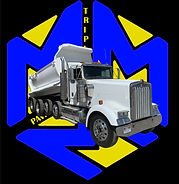top of page

Call (845) 417-7281 today for
your free estimate!
Official member of the Ulster County Chamber of Commerce

FAQ'S

Frequently Asked Questions

Frequently Asked Questions
At Triple M Paving & Excavating, we believe that an educated customer is our best customer. Paving a driveway or excavating a site is a significant investment, and you deserve to know exactly what you are paying for.
We have compiled a list of the most common questions we hear from homeowners in Ulster, Orange, and Dutchess counties. From understanding the difference between sealcoating and paving to how different materials hold up to harsh NY weather, we want to provide clear, honest answers. If you don’t see your question listed here, please give us a call at (845) 417-7281—we are always happy to explain our process.
Triple M FAQ's
Still have questions? Feel free to fill out the form below and we will get back to you asap

bottom of page